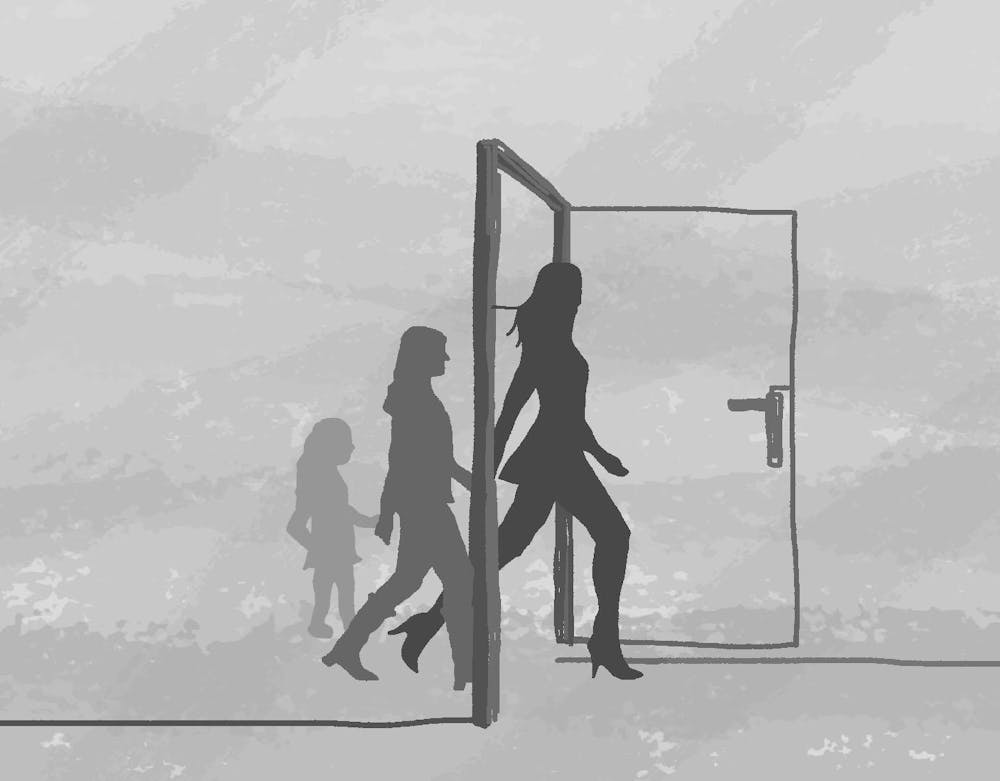During orientation week in August, I discovered that making small talk is one of my specialities. Thinking of questions to ask others comes easy to me, even if we’ve just met. “What majors are you for sure not interested in?” “Did you like the town you grew up in?” “What’s your favorite fruit to eat in the summertime?”
Other times, I find myself trying to guess facts about them based on first impressions. One deceptively difficult guess is the answer to this question: “How many siblings do you have?” My guesses have been met with both looks of offense and flattery. It’s hard to tell from first impressions, but after meeting so many new people at once, I’ve learned key indicators that point to how many siblings someone might have.
Only children, without a doubt, have the worst reputations: guessing incorrectly that someone is one often elicits a look of displeasure. Characteristics that many people associate with the “only child syndrome” include selfishness, self-entitlement, and an inability to share with others. While some do live up to the stereotype, there are often even more middle and youngest children who exhibit these traits. They are not immediate distinguishers and can’t be used to accurately guess. For me, the qualities that send a flashing radar that this person is an only child are veneers of high-achievement and a tendency to relate the conversation to something that reminds them of home.
Many of the only children I know have dangerous tunnel vision. When they have their mind set on a certain meal, reaching a certain deadline, or going to a meeting at a specific time, there is no hope of compromise or reasoning. Some might call this stubbornness, but I see instead a level of independence that most people can’t attain.
Only children also always seem to reminisce about their time at home. For example, during a conversation about the weather or upcoming events happening at Brown, maybe ice skating or winter break plans, they talk about how the ice skating rink in their hometown is bigger, better, and filled with more talented figure skaters. Or, on the rare occurrence the food selection at the Ratty turns out to be quite decadent and delicious, they tend to bring up their home-cooked meals—vivid descriptions of smoked ribs that fall off the bone or minced pork with vegetables—leading us to look back down at our dining hall food and lose our appetite.
Middle children are often the most lowkey and tend to get along with everyone in the friend group. The two words that I would use to describe them are malleable and balanced. In a way, they’re more mature than the oldest children and tend to get along with everyone, without picking favorites. As a result, one may pine for a middle child’s attention in a group setting, and more than one middle child in a group may offset the group dynamic.
By far the most difficult sibling dynamics to pinpoint are youngest and oldest children. This is fitting, as the youngest and oldest siblings tend to have the tensest relationships.
Oldest children tend to have a clear sense of direction, and they immediately take note when there is a mood shift with a friend or within a group. I find that older children tend to force responsibility onto themselves. When a fight or disagreement breaks out, they are the first to assess what’s happening, then step in to mediate with the help of the middle child. They tend to both parties’ feelings, and try to direct the conversation to a place of compromise and reflection. When someone is under the weather or more quiet than usual, the oldest will often reach out and check in. They may also become more upbeat and enthusiastic in the conversation in order to draw attention away from the quieter individual. To me, the oldest are the noblest, with a dash of arrogance.
I myself am the youngest child. A personality trait that I think belongs to the youngest is creativity when solving problems and coordinating plans for the group. Oftentimes, the youngest child has to fend for themselves, finding their own methods of entertainment. Because parents tend to relax more and loosen restraints on the youngest children, youngest children are often left to build the leftover Legos alone or learn how to carefully rewear the passed-down clothing from their older siblings. As a result, youngest siblings always have the best style and the most creative approaches to their hobbies, although some of it does come from stealing inspiration from their older siblings.
As youngest siblings have more chances to be independent compared to their older siblings, they have to figure out ways to coordinate rides and make weekend plans, while trying to outmaneuver their parents in a way that the older siblings couldn’t. As a result, in college, the plans for parties, weekend trips into the city, or when to eat meals are usually coordinated by the youngest. Once the group is together, the youngest siblings usually have the most fun, though a part of them may wish that they had someone else to support them and carry the burden of being the planner.
All in all, the variety of sibling dynamics can help you make sense of a person’s personality. If you pay attention to these, over time, the initial assumptions and stereotypes you had about different siblings may change, allowing you to form deeper connections with them. Soon, the bond between the friends you make in college turns into your own kind of siblings, forming a wholesome little family of your own.




